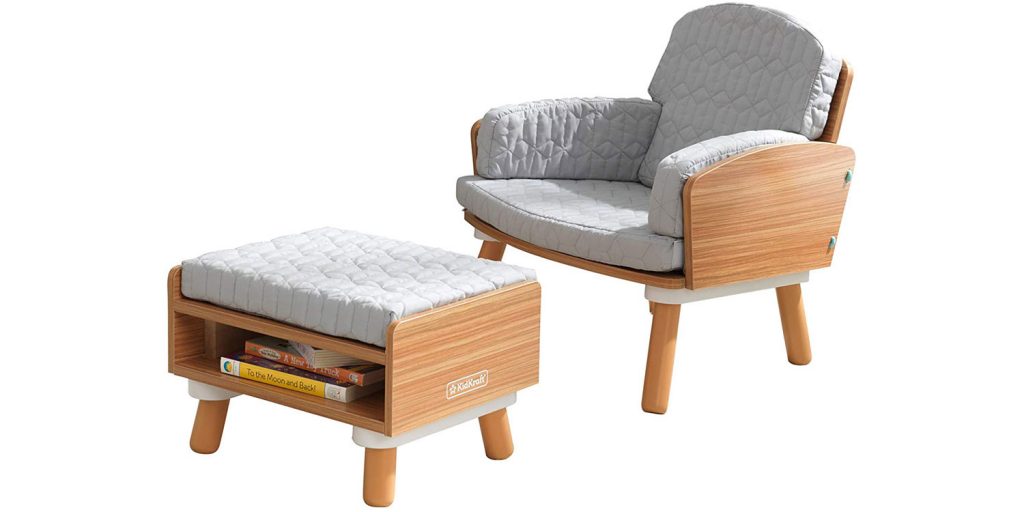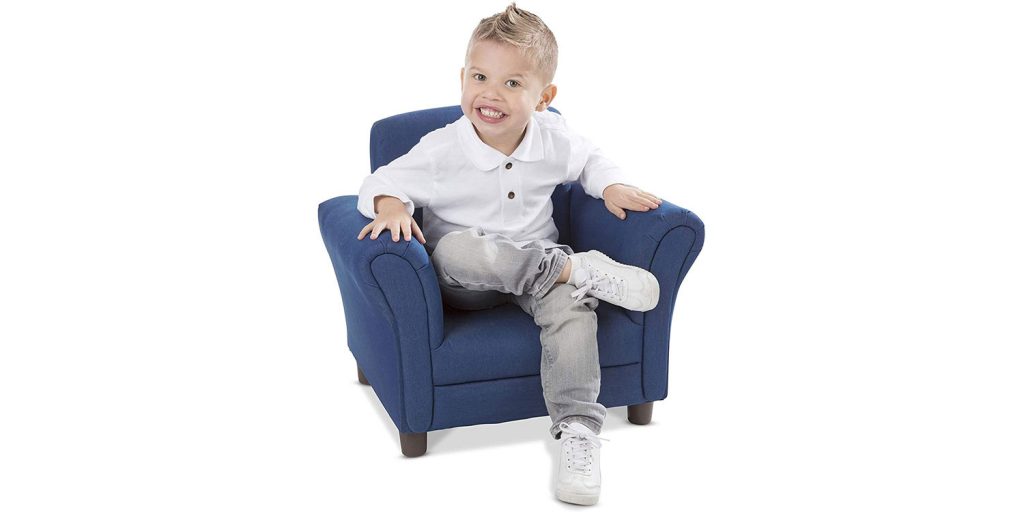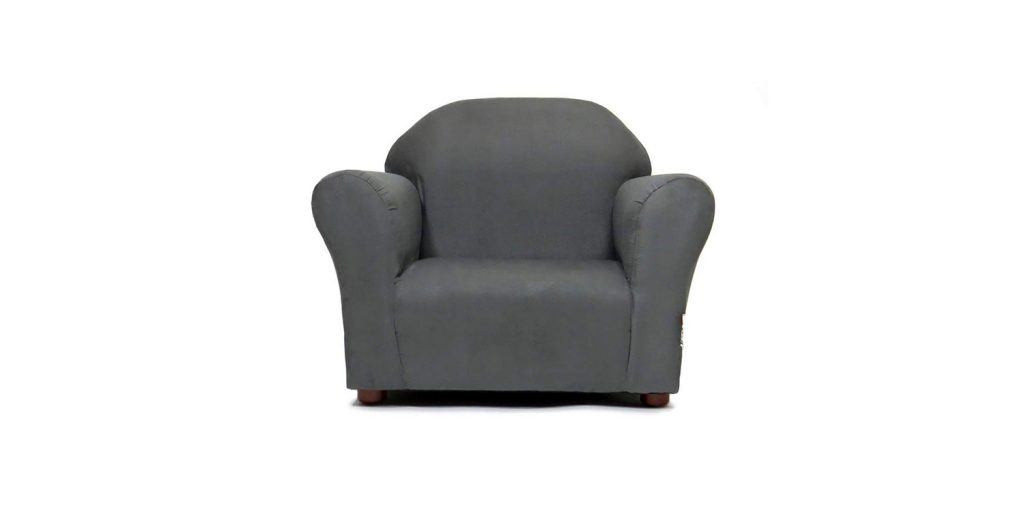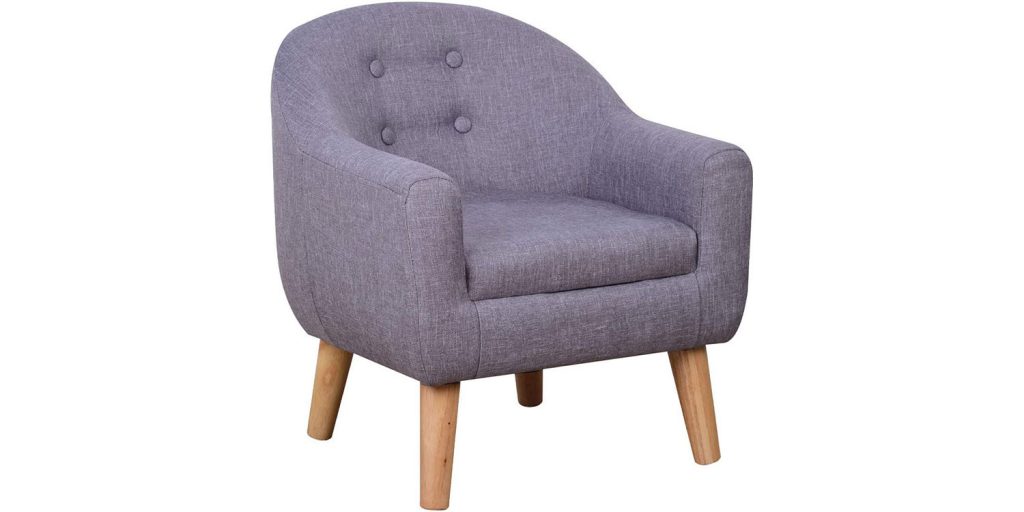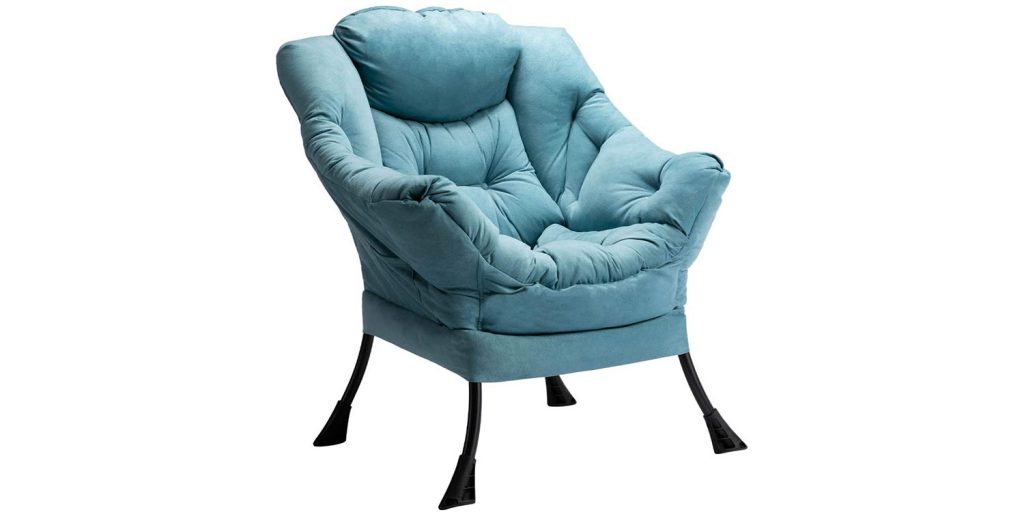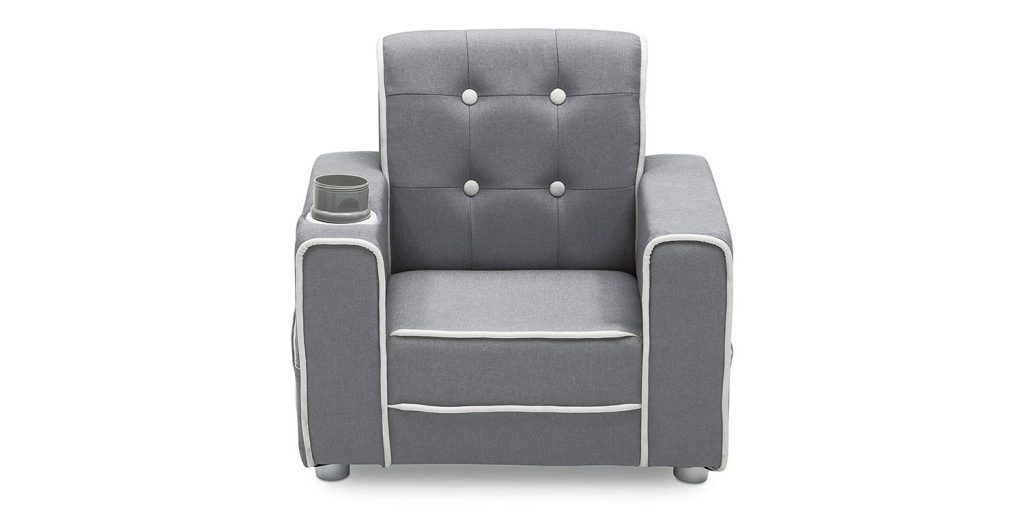Do you want to purchase a chair for your child? Have you been searching and yet can’t seem to find anything that would perfectly fit your kid’s needs and preferences? Don’t worry! Skyline Furniture offers a wide variety of options that will surely tickle and please your kid.
From bean bags, rockers, rocking chairs, swivel chairs, recliners to even movie theatre seats for kids – Skyline Furniture offers great deals on all of these. However, if your child’s favorite hangout is the dining table with you guys, then you can go ahead and pick up a matching chair that will match their taste.
If you are thinking of a formal dining chair, you should go for a Windsor adjustable height folding stool. Its arms are flared, and it has a mahogany frame that will surely match the rest of your furniture. It is fully upholstered as well as its cushion is padded with foam that has been dacron wrapped to make your child even more comfortable.
In this article, you will learn more about the brand and why it is so popular before we show you the most popular kids’ chairs from Skyline Furniture. Maybe your next chair for kids come from Skyline Furniture?
About Skyline Furniture
Skyline Furniture is one of the top furniture retailers for a reason. They offer a wide variety of styles and price points all in one place. You can find everything from contemporary to casual in wood, leather, fabric, metal and even upholstery there.
You can also find kids’ chairs that will perfectly match your home’s interior. From Windsor, adjustable height folding stool chairs for your formal dining room to rocking chairs, swivel chairs and recliners for relaxing with your little one. If you want a chair that will suit your child’s tastes, Skyline Furniture has got you covered!
Did we mention that they also sell fantastic patio furniture? So if you are looking to spruce up your outdoor area, you should check out their products.
Skyline Furniture has been a trusted brand in the furniture industry for decades, and they continue to serve customers not only with high-quality but also affordable products.
Why Skyline Furniture is So Popular
So what makes Skyline Furniture so popular? Well, for one, they only sell the best. With the many products that they offer, you can be sure that all of them are made with the finest materials and passed thorough quality checks before reaching your home. They make use of cutting edge tools and machines to ensure that their products meet a high standard.
To make things easier for their customers, they have a dedicated team of customer support representatives who answer any questions or concerns. You can give them a call or visit their website (https://skylinefurnituremfg.com/) if you want to know more about their products and services.
The 5 Most Popular Kids’ Chairs from Skyline Furniture
Now let’s go ahead and take a quick look at the most popular kids’ chairs from Skyline Furniture. We will provide you with descriptions, pros, cons, and customer reviews of each one so that you can make an informed decision on which product to pick for your little ones.
1. Skyline Kids Armless Chair

If you want a kids’ armless chair, then this is the best choice you can go for. It has a simple yet contemporary design that will perfectly match your kid’s room or playroom.
The Skyline Kids Armless Chair is engineered wood with a mahogany finish, and PU cushioned seat and backrest. Its padding is fully upholstered with dacron wrapped foam that has been kiln-dried to make it reliable and comfortable.
Its seat is covered with vinyl for easy cleaning, while you can easily wipe down its PU fabric as well. The chair also provides excellent back support thanks to the curved edges of its high-density foam padding. And if you want to keep it from rolling, then you can simply adjust its front casters.
ASIN: B00KFPD5LQ
2. Skyline Furniture Kids Chair, Pattern, One size

If you want a chair that’s perfect for your little one, then this is the best choice. It comes with a flat-pack design, so it will be easy to carry and set up. Its seat has a round edge which provides better comfort compared to other chairs out there.
The Skyline Furniture Kids Chair, Pattern, One size is made from solid wood with a maple finish and polyester upholstery. It has a fully padded seat and backrest to provide comfort even when your little one sits on it for an extended period.
It also features rubber caps at the bottom of its legs to prevent it from scratching your floor, while its bentwood design makes it sturdy enough to endure children’s activities without breaking or tipping over.
This kids’ chair is the perfect choice for your playroom, reading nook or even your child’s bedroom. It can easily match any colour scheme you have at home, and it will make a great addition to different areas of your house where you want to sit down with your little one.
If you want a stylish kids’ chair that will last for years, this is the perfect pick. It has a solid build, and it comes with a 4-year warranty from the manufacturer and complimentary white glove delivery.
ASIN: B079Z88M6S
3. Skyline Furniture Kids Chair, Pink, One size

This is the perfect kids’ chair if you want something that can stand up to your child’s rough and tough playtime. It’s made from solid wood and polyester fabric so it will definitely last for years.
Its seat and backrest are fully padded with dacron wrapped foam which provides comfort even when your little one spends countless hours sitting on it while drawing and reading.
The Skyline Furniture Kids Chair, Pink, One size has a fully upholstered seat and backrest that is perfect for keeping your kid comfortable and happy. It also features 4 caster wheels to prevent it from tipping over while its bentwood legs provide better stability to the whole chair.
Its seat and backrest are upholstered with polyester fabric that is easy to clean. You can simply wipe it down when your little one spills something on it or spills food and drinks on the chair. It’s best used in playrooms, but you can place it anywhere in the house such as your child’s bedroom and living room.
It’s perfect for your daughter’s bedroom or playroom because it comes in different colors; you can pick the pink one, purple one or even the green one depending on their room décor. Its simple design makes it great for all kids’ rooms and playrooms, while its solid build makes it a reliable addition that will last for years.
This kids’ chair is easy to move around because it has smooth-rolling casters, and you can also adjust its height when your kid grows taller. It’s a great addition for your playroom, bedroom or even your living room where you want to spend quality time with your child playing board games and watching movies together.
ASIN: B079Z3M2KK
4. Skyline Kids Armless Chair, Broadway Purple
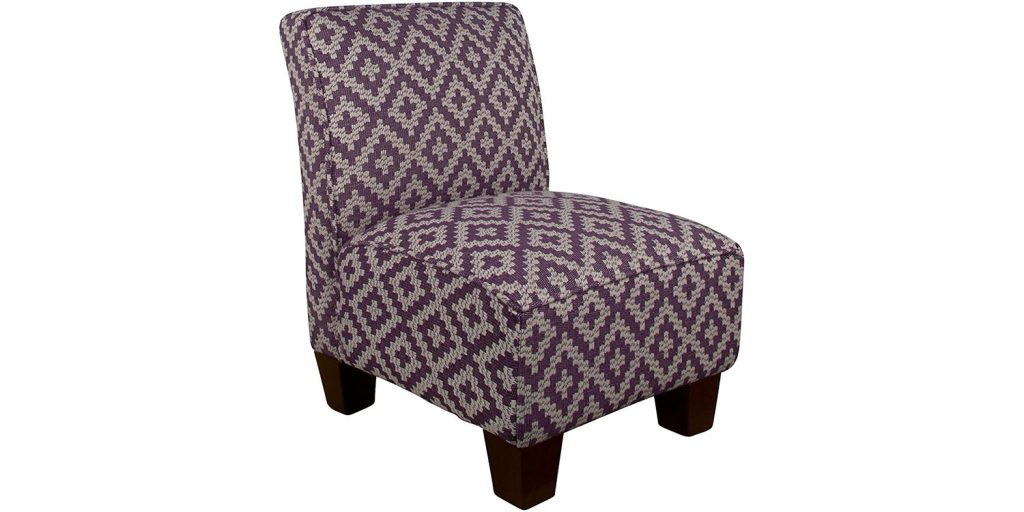
This is the best kids’ furniture that you will find out there because it’s made from solid wood and high-density foam for better comfort. And not only that, but your little one will love this chair, even more, thanks to its fun design. You can choose between different colors because Skyline Furniture Kids Armless Chair, Broadway Purple, One size is available in purple, pink and green.
It comes with a fully upholstered seat and backrest that is padded with dacron wrapped foam for superior comfort. What’s more, it’s built with bentwood legs to make the whole chair sturdier while its casters provide ease of movement around your home.
This kids’ armchair is a stylish addition for your child’s bedroom or playroom because of its cool design. It won’t take up too much space in the room and your little one will love playing on it while eating snacks with their friends.
It’s going to be a great addition to any home with kids as it cleans easily just by wiping it down. And when you’re not using it, simply fold the entire chair and store it until the next time you need it.
Its solid construction will ensure that your kid’s chair will last for years, while its simple design makes it perfect for any room in your house – from bedrooms to playrooms and even living rooms. Your kid will appreciate this great chair even more once they find out that you got it for them as a surprise.
You can easily keep it clean because of its fully upholstered seat and backrest that only requires cleaning with a damp cloth if your little one spills something on it or just gets their snack all over the place.
ASIN: B00KFPD6EM
5. Skyline Kids Tub Chair, Premier Lilac
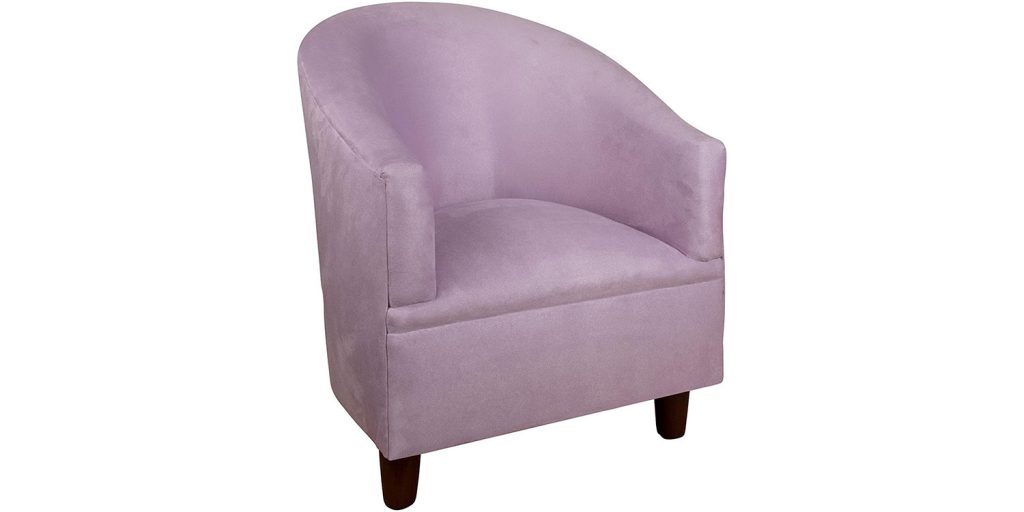
If you’re looking for a kids’ armchair that will offer maximum comfort, then the Skyline Kids Tub Chair, Premier Lilac, is a great choice. It’s upholstered in plush white fabric, and its seat is filled with high-density foam to provide your kid with extra comfort while sitting on it.
It has been built from solid wood to ensure that it will last for years while its bentwood legs provide stability and support.
This kids’ tub chair is an excellent addition to your little one’s bedroom or playroom because of its vibrant, fun design. They’ll love having their favorite TV show playing in the background while relaxing on this armchair.
It’s the perfect place for your kid to enjoy their snacks and drinks with friends because it has smooth-rolling casters that make this armchair easy to move around. You can also adjust its height depending on your child’s size.
Made from solid wood, you can rest assured that the Skyline Kids Tub Chair, Premier Lilac, is an excellent addition to your child’s playroom.
It doesn’t take up too much space in the room, so you can easily keep it there even if you have limited floor space, but its wheels will allow you to move it around when needed. You can also fold the chair flat when you’re not using it and just keep it in a corner until the next time you need to entertain your little one.
It has been built with bentwood legs to ensure that this kids’ armchair is sturdy even if your child jumps on it while playing. Its high-density foam provides extra comfort for your kid.
ASIN: B00KFPD4AI
The post Skyline Furniture: Kids’ Chairs That You Will Love appeared first on Comfy Bummy.

